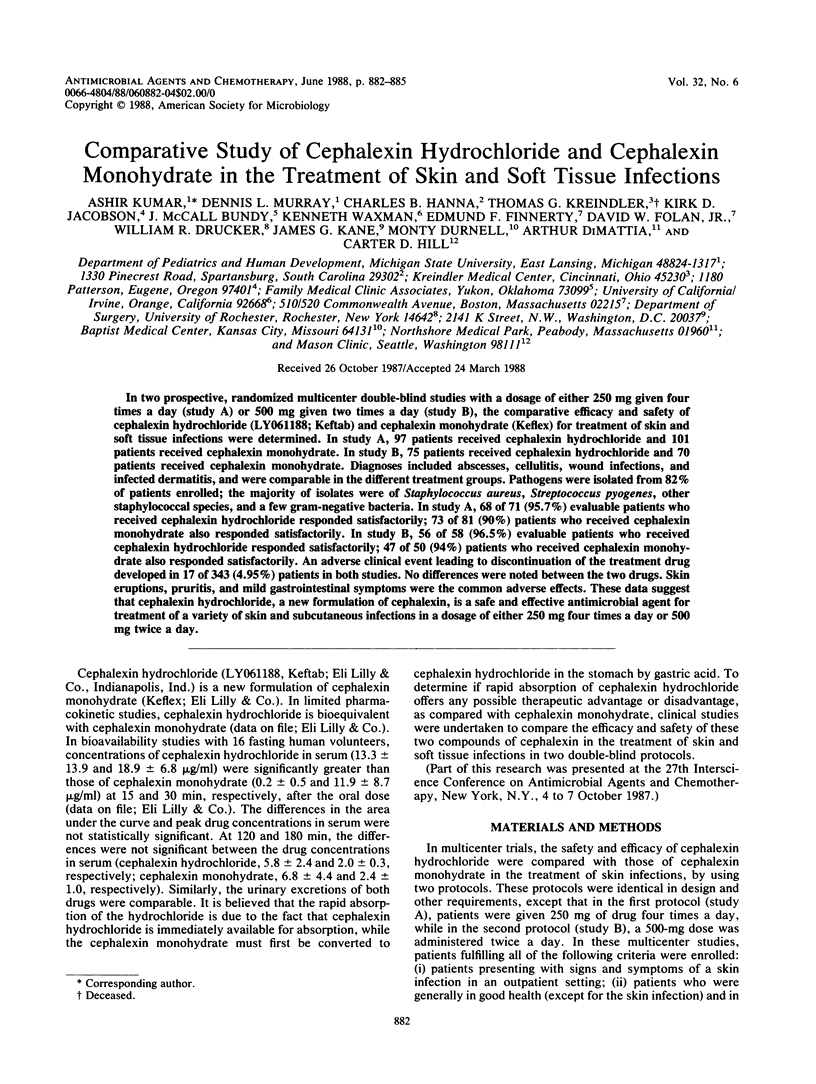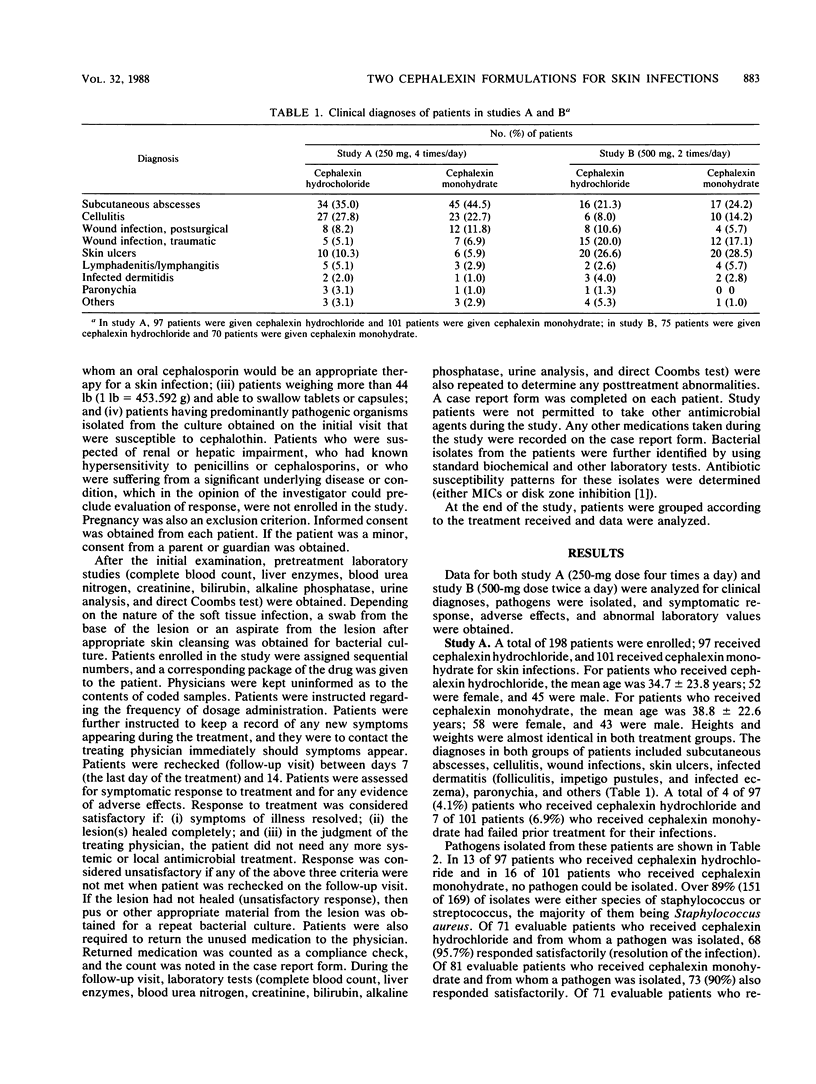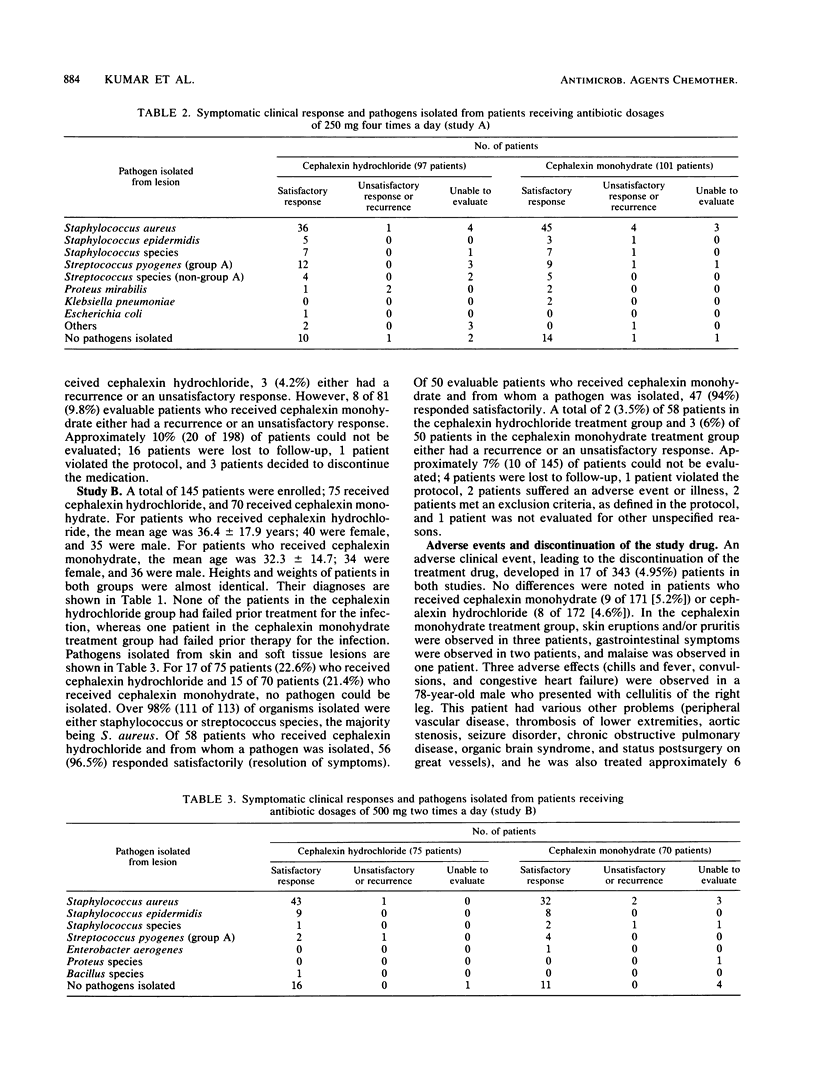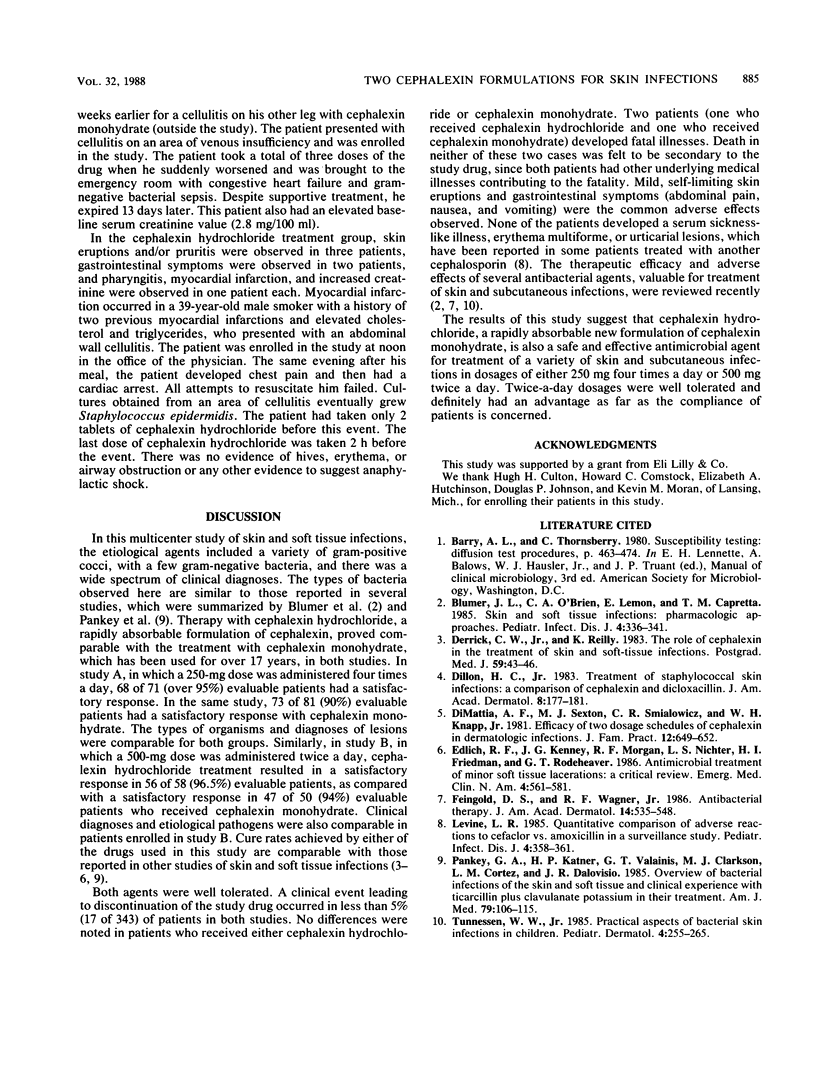Abstract
In two prospective, randomized multicenter double-blind studies with a dosage of either 250 mg given four times a day (study A) or 500 mg given two times a day (study B), the comparative efficacy and safety of cephalexin hydrochloride (LY061188; Keftab) and cephalexin monohydrate (Keflex) for treatment of skin and soft tissue infections were determined. In study A, 97 patients received cephalexin hydrochloride and 101 patients received cephalexin monohydrate. In study B, 75 patients received cephalexin hydrochloride and 70 patients received cephalexin monohydrate. Diagnoses included abscesses, cellulitis, wound infections, and infected dermatitis, and were comparable in the different treatment groups. Pathogens were isolated from 82% of patients enrolled; the majority of isolates were of Staphylococcus aureus, Streptococcus pyogenes, other staphylococcal species, and a few gram-negative bacteria. In study A, 68 of 71 (95.7%) evaluable patients who received cephalexin hydrochloride responded satisfactorily; 73 of 81 (90%) patients who received cephalexin monohydrate also responded satisfactorily. In study B, 56 of 58 (96.5%) evaluable patients who received cephalexin hydrochloride responded satisfactorily; 47 of 50 (94%) patients who received cephalexin monohydrate also responded satisfactorily. An adverse clinical event leading to discontinuation of the treatment drug developed in 17 of 343 (4.95%) patients in both studies. No differences were noted between the two drugs. Skin eruptions, pruritis, and mild gastrointestinal symptoms were the common adverse effects. These data suggest that cephalexin hydrochloride, a new formulation of cephalexin, is a safe and effective antimicrobial agent for treatment of a variety of skin and subcutaneous infections in a dosage of either 250 mg four times a day or 500 mg twice a day.
Full text
PDF



Selected References
These references are in PubMed. This may not be the complete list of references from this article.
- Blumer J. L., O'Brien C. A., Lemon E., Capretta T. M. Skin and soft tissue infections: pharmacologic approaches. Pediatr Infect Dis. 1985 May-Jun;4(3):336–341. doi: 10.1097/00006454-198505000-00051. [DOI] [PubMed] [Google Scholar]
- Derrick C. W., Jr, Reilly K. The role of cephalexin in the treatment of skin and soft-tissue infections. Postgrad Med J. 1983;59 (Suppl 5):43–46. [PubMed] [Google Scholar]
- DiMattia A. F., Sexton M. J., Smialowicz C. R., Knapp W. H., Jr Efficacy of two dosage schedules of cephalexin in dermatologic infections. J Fam Pract. 1981 Apr;12(4):649–652. [PubMed] [Google Scholar]
- Dillon H. C., Jr Treatment of staphylococcal skin infections: a comparison of cephalexin and dicloxacillin. J Am Acad Dermatol. 1983 Feb;8(2):177–181. doi: 10.1016/s0190-9622(83)70020-4. [DOI] [PubMed] [Google Scholar]
- Edlich R. F., Kenney J. G., Morgan R. F., Nichter L. S., Friedman H. I., Rodeheaver G. T. Antimicrobial treatment of minor soft tissue lacerations: a critical review. Emerg Med Clin North Am. 1986 Aug;4(3):561–580. [PubMed] [Google Scholar]
- Feingold D. S., Wagner R. F., Jr Antibacterial therapy. J Am Acad Dermatol. 1986 Apr;14(4):535–548. doi: 10.1016/s0190-9622(86)80441-8. [DOI] [PubMed] [Google Scholar]
- Levine L. R. Quantitative comparison of adverse reactions to cefaclor vs. amoxicillin in a surveillance study. Pediatr Infect Dis. 1985 Jul-Aug;4(4):358–361. doi: 10.1097/00006454-198507000-00005. [DOI] [PubMed] [Google Scholar]
- Pankey G. A., Katner H. P., Valainis G. T., Clarkson M. J., Cortez L. M., Dalovisio J. R. Overview of bacterial infections of the skin and soft tissue and clinical experience with ticarcillin plus clavulanate potassium in their treatment. Am J Med. 1985 Nov 29;79(5B):106–115. doi: 10.1016/0002-9343(85)90141-x. [DOI] [PubMed] [Google Scholar]
- Tunnessen W. W., Jr Practical aspects of bacterial skin infections in children. Pediatr Dermatol. 1985 Jul;2(4):255–265. doi: 10.1111/j.1525-1470.1985.tb00463.x. [DOI] [PubMed] [Google Scholar]


